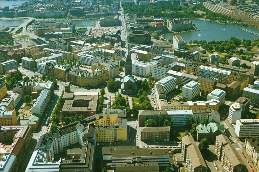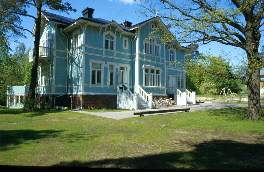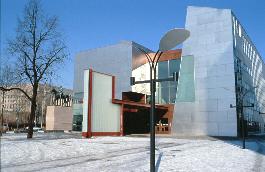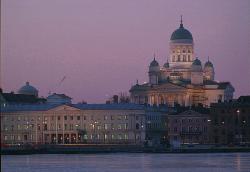
|
ITiCSE 2000
Latest info
Conference venue
Program
Contact info
Other info
Related
|

|

|
Other Information
ITiCSE 2000 will be arranged in Helsinki, the capital of Finland. Here we tell you something about the hosts and present some links for further browsing. Finland is a young republic. The independence was gained 1917 after a Russian rule since 1809. Before that the area was part of Sweden. The young country kept its independence even through the Second World War 1939-45. Today, Finland is a country with a population of five million. The economy is typical for advanced industrial societies as two thirds of its total output is generated in the service sector. The most important export industry clusters are metal, electronics and forest. In 1997, 53 % of the exports were shipped to the the other European Union countries. The country is led by a president which is elected every six years. The current president Mr Martti Ahtisaari was elected in 1994. The 200-seat one-chamber parliament is elected every four years. The government must enjoy the confidence of the parliament. Finland is known as the land of forests and lakes. Three quarters of the area is covered by the forests and the phrase "land of thousand lakes" is not quite accurate: the actual number is 66 000. In the southern coast there is a rough but beautiful archipelago while the northern Finland, Lappland shows the beauty of the arctic untouched nature.
Further information: Helsinki located in the southern coast of Finland by the Baltic Sea. The city centre was built on the small peninsula and therefore the sea plays an important part. Today there are about half a million people living in Helsinki. If you count the outskirts as well, the number of inhabitants in the capital area is about a million which is one fifth of the population of Finland.


Helsinki is an urban city with pictoresque surroundings very near the city center. Altough the city is small compared to continental capitals its history and status as the capital makes it an attractive place to visit. Museums, theaters, concerts and the Opera Hall are at your service.

The museum of modern art - Kiasma - in the heart of Helsinki (with the Parliament House in the background). In the year 2000 Helsinki, the capital of Finland, is one of the nine culture cities in Europe. Besides this, Helsinki celebrates its 450th anniversary and there will be a lot of happenings in Helsinki, especially at June 12th which is the actual founding day. In Helsinki, the western and eastern European cultures have met the traditional Finnish culture. Helsinki, the daughter of the Baltic, was founded by Gustavus Wasa, king of Sweden in 1550 and its original mission was to compete with the Estonian city of Tallinn for the growing trade and to protect Sweden against the threat of Russia. The 1540s were a time of restless relations between Sweden and Russia, with the possibility of war looming large. Russia was still an isolated and backward country, but a unification process due to the Greek Orthodox church and Russia´s royal house had increased its power and land area. In a wider perspective, the Russian border in Finland was more than just a national frontier. It was becoming a border between two cultures, the western and eastern European ones, a fact that has been repeatedly drawn fro ward throughout history. From the 11th century, Finland was a part of Sweden until 1809. In 1809 Finland became a grand duchy of the Russian empire. Finland was declared independent on December 6th 1917. The monumental center built around Senaatintori (Senate Square) is Helsinki´s most distinctive architectural feature. Intellectual life in Finland centered on Senaatintori. Yliopiston kirjasto (University Library) on the northwestern corner of the Senaatintori is among the finest buildings in Helsinki. The University of Helsinki celebrates its 360th anniversary on year 2000 and therefore it will with pleasure offer free conference rooms for the seminar.

Helsinki viewed from the sea. Helsinki also had the honor to be the chairman of the Parliament of the European Union in 1999.
Further information:
One pearl in the crown of Helsinki is the University with 40.000 students, teachers and other staff. The university has nine faculties and four campus areas in different parts of the city. There are also a number of training and research departments all over the country. The university celebrates its 360th anniversary in the year 2000.
Further information: |
| |
||||